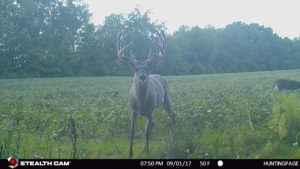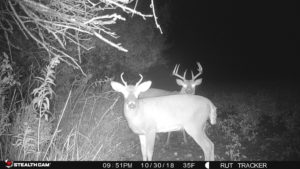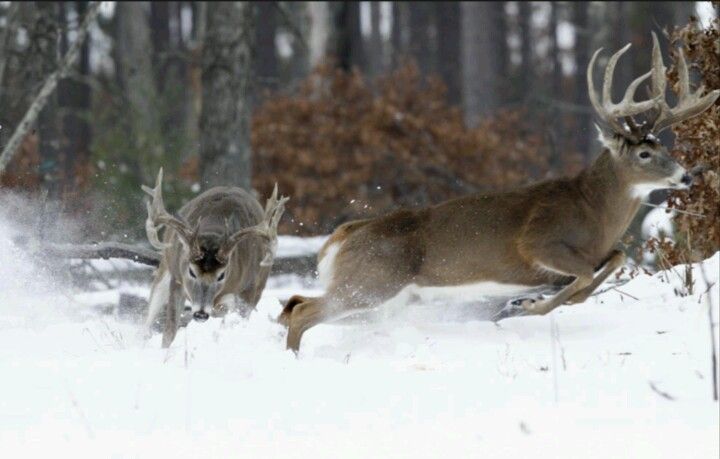2018 Rut in Review
It seems like just yesterday that the Hunting Page was telling you that we would once again be tracking the whitetail rut again this year. We announced in August and by September we had our Stealth Cams set on food plots and mock scrapes and licking branches. Our deer observation teams were trained and hard at work documenting observed deer behavior. Dr. Craig Dougherty of NorthCountry Whitetails was gathering rut data for his 42nd consecutive year and putting together the first report of 2018.
Our first Rut Report of the year entered cyber space mid-September. We reported observing the usual early season rubs and fresh scrapes sure signs of the upcoming rut. By now bucks were “hard horned” and light sparring and pushing matches were occurring. Bachelor groups were beginning to break up but doe-fawn groups were still intact. The deer were for the most part in their summer feeding patterns, the “need to feed” dominated whitetail behavior patterns. The Hunting Page rut meter read a puny 2%, we were a long way off from calling “Rut On”.

Our whitetail hunting experts advised hunting late summer-early fall food sources and cautioned that most of the big bucks were for the most part, late evening/nocturnal movers. The smart money was on hunting early acorns, apples, assorted fruits and fresh greens. As usual the deer were working hard turning brassica stands into muddy feed lots. Rut travel patterns were not readily observed.
Fast forward to mid-November, the rut meter was stuck on 98 and the Hunting Page called “Rut On”. Nocturnal bucks were now daytime movers seeking an estrus doe anyplace one could be found. The “big boys” were on the march and the best hunting occurred every day, all day long. It was time to take vacation or call in sick, and head to the woods. The doe/fawn groups were broken up and food sources were being patrolled by love crazed bucks. When the bucks weren’t tearing up the brush or fighting for dominance, they were grunting a doe or snort-wheezing a warning at competing buck. The magic period mat good hunters of us all, ant least for a few days. By early December, the breeding stage of the rut had begun to wane.

This pattern was observed over roughly 94% of the whitetail’s range. The farther north, the truer the pattern. A few southern locales had yet to experience the rut. A special thank you to our 2 million plus followers for weighing in and our sponsors for helping make the Hunting Page Rut Report happen in 2018. With years like this, it’s no surprise that the fabric of America is indeed woven of deer hide.



















![The Best Deer Camp Chili [VIDEO] Deer Chili Ingredients, Tomatoes, Chili Spices](/wp-content/uploads/2015/10/Deer-Chili-Deer-Camp-Recipe-218x150.jpg)
![How to Call Elk Early in the Season [VIDEO]](/wp-content/uploads/2016/08/byers003-218x150.jpg)




![Idiots Disturb Hunter: How Would You Have Handled It? [VIDEO]](/wp-content/uploads/2015/10/DSC00110-e1474487693878-100x70.jpg)
![Albino Buck Shocked to Shed His Antlers [VIDEO]](/wp-content/uploads/2015/10/AlbinoDeer-100x70.jpg)